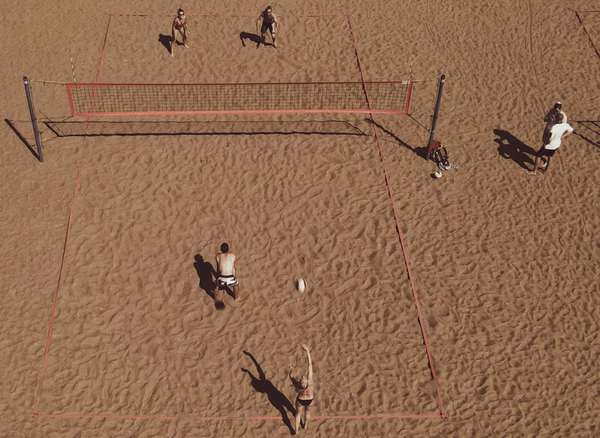Pole vaulting is one of those sports that makes you wonder, "Who thought of this?" Imagine a bunch of ancient Greeks sitting around, looking at a long stick and thinking, "Hey, let's use this to fling ourselves over a bar!" And thus, the sport was born. The origins of pole vaulting can be traced back to ancient Greece, where it was used as a practical means of crossing obstacles like rivers and walls.
Fast forward to the modern era, and pole vaulting has become a staple in track and field events worldwide. The sport has evolved significantly, with advancements in technology and training methods. The poles themselves have transformed from rigid wooden sticks to flexible carbon fiber marvels, allowing athletes to reach new heights—literally.
The Evolution of World Records
The men's pole vault world record has seen its fair share of drama and excitement. The record has been broken numerous times, each new height pushing the boundaries of what we thought was possible. One of the most iconic figures in pole vaulting history is Sergey Bubka from Ukraine. Bubka was a force to be reckoned with, breaking the world record 35 times during his career. His highest jump was 6.14 meters, a record that stood for over two decades.
Enter Armand "Mondo" Duplantis, the Swedish-American pole vaulter who has taken the sport by storm. In February 2020, Duplantis broke Bubka's long-standing record by clearing 6.17 meters. But he didn't stop there. Just a week later, he broke his own record, soaring to an incredible 6.18 meters. Talk about an out-of-body experience! At the Paris Olympics in August 2024, he broke his own record again with a height of 6.25 meters on his very last jump.
The Science Behind the Jump
Pole vaulting is not just about running with a stick and hoping for the best. There's a lot of science involved. The pole itself is a marvel of engineering, usually made from carbon fiber, which provides the perfect balance of flexibility and strength. When a pole vaulter plants the pole into the box, it bends and stores energy, which is then released to propel the athlete over the bar.
The technique is equally important. Athletes must master the run-up, plant, take-off, and clearance phases to achieve maximum height. It's a bit like trying to solve a Rubik's Cube while riding a unicycle—challenging but incredibly rewarding when done right. And let's not forget the mental aspect. Pole vaulters need to be in the present moment, fully focused on the task at hand. One slip in concentration, and it's game over.
The Most Ridiculous Crowd
Imagine being in the Olympics, surrounded by thousands of cheering fans, all eyes on you. The atmosphere is electric, the crowd is buzzing, and you can feel the energy in the air. This was the scene during the men's pole vault final at the 2024 Paris Olympics. The crowd went wild as Duplantis made his record-breaking jump, creating an unforgettable moment in sports history.
But it's not just the big events that draw the most ridiculous crowds. Local meets and smaller competitions also have their fair share of enthusiastic supporters. Whether it's a high school track meet or a national championship, the energy and excitement are palpable. Fans come from all walks of life, united by their love for the sport and their admiration for the athletes who push the limits of human potential.
The Olympic Dream
For many pole vaulters, the Olympics represent the pinnacle of their careers. Winning a gold medal is the biggest dream, a testament to years of hard work, dedication, and sacrifice. The Olympic record for men's pole vaulting has been broken multiple times, each new champion etching their name into the annals of history.
One of the most memorable Olympic moments came in 2016 when American Sam Kendricks won the bronze medal in Rio. His performance was nothing short of spectacular, showcasing the skill and determination required to compete at the highest level. Fast forward to the Tokyo 2020 Olympics, and all eyes were on Mondo Duplantis. The young Swede did not disappoint, winning the gold medal and solidifying his status as the world's best pole vaulter. He repeated as the gold medalist in this year's Paris Olympic Games.
The Future of Pole Vaulting
The future of pole vaulting looks brighter than ever. With advancements in technology, training methods, and a new generation of talented athletes, the sport is poised for even greater heights. Young pole vaulters around the world are inspired by the likes of Duplantis and Kendricks, dreaming of one day breaking the world record themselves.
But it's not just about the records. Pole vaulting is a sport that teaches valuable life lessons—resilience, perseverance, and the importance of setting and achieving goals. Whether you're a seasoned athlete or a newcomer to the sport, there's always something new to learn and achieve. So grab a pole, find a bar, and start jumping. Who knows? You might just be the next world record holder.
Pole Vaulting FAQs
Who holds the current men's pole vault world record?
Armand "Mondo" Duplantis holds the current men's pole vault world record with a jump of 6.18 meters, achieved in February 2020.
What is the Olympic record for men's pole vaulting?
The Olympic record for men's pole vaulting is 6.03 meters, set by Thiago Braz da Silva of Brazil during the 2016 Rio Olympics.
How has technology impacted pole vaulting?
Advancements in technology, particularly the development of carbon fiber poles, have significantly impacted pole vaulting. These poles provide the perfect balance of flexibility and strength, allowing athletes to achieve greater heights.
Summary
Pole vaulting is a sport that combines athleticism, science, and a touch of madness. From its ancient origins to the modern-day marvels of carbon fiber poles, the sport has come a long way. The current men's pole vault world record is held by Armand "Mondo" Duplantis, who cleared an astonishing 6.18 meters. With a rich history and a bright future, pole vaulting continues to captivate audiences and inspire athletes around the world.








